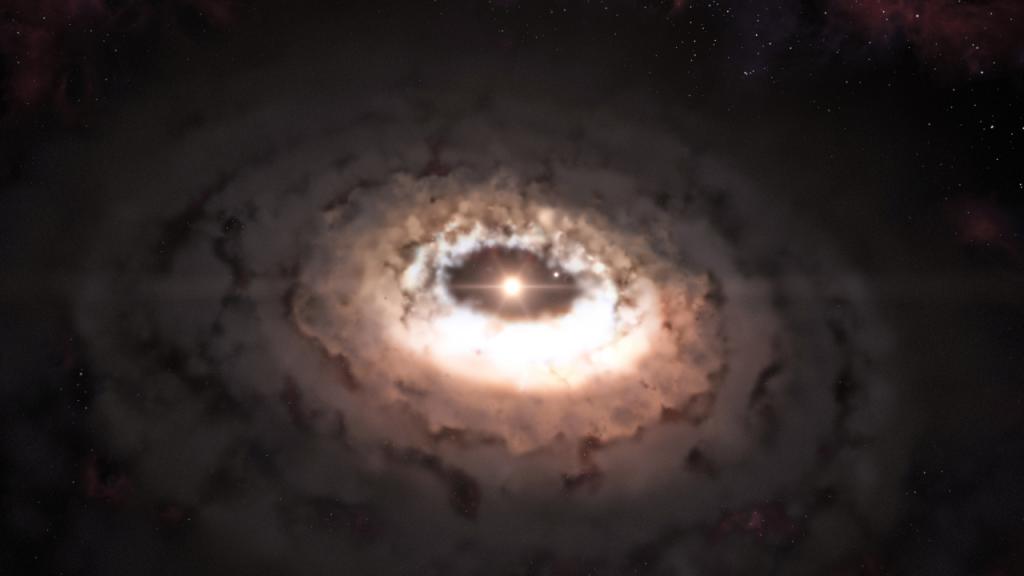
04/05/2018
Scientists from Los Andes participate in the creation of a 3D map of the Universe
The reason why finding the answer to this question is so difficult is that only five percent of the Universe’s matter and energy content are the same as the matter that we experience in our daily lives; it is still unclear what the other types of matter and energy are.
The scientific community has spent the past 45 years creating detailed maps of the universe to deduce the properties of these components that belong to the unknown matter and energy. As technology advances, the map has an increasing number of points that represent the location of a galaxy. The first maps had thousands of galaxies, but today the maps show millions of galaxies.
Colombia is participating in the project.
Jaime Ernesto Forero Romero, associate professor in the Department of Physics at the Universidad de los Andes is leading the Dark Energy Spectroscopic Instrument (DESI) project in Colombia, which will create a new 3D map of the Universe.
“We know that, apparently, the galaxies move farther away from us. Until now, the most satisfactory explication for this has been the proposal that suggested the presence of dark matter. We don’t know what this is but it would explain the accelerated expansion of the universe. For this reason, this project is an important global step forward as it signifies having a better understanding of the nature of this dark matter, and, for the first time, a Colombian institution is taking part,” explains Forero.
To work on the project and to create the map, a telescope is required, which is currently located in the Kitt Peak National Observatory in Arizona, U.S.A.
“To carry out this project, the telescope needs to be taken apart and new instruments, which are built in Europe and the U.S.A., need to be fitted into it,” adds Forero.
This 3D map will allow anyone, regardless of where they are on the Earth, to travel across the Universe and view space from a platform such as YouTube.
Currently, there are close to five hundred scientists around the world working on the DESI project, including Saul Perlmutter, who won the Nobel Prize in Physics in 2011 for providing evidence on the expansion of the Universe, and three Uniandes alumni.
In Colombia, Colciencias and the European Union finance work on the DESI project. Internationally, there are more than thirty countries and fifty institutions working on the project including the Lawrence Berkeley National Laboratory in the United States.
“My specific role in the DESI project is working with the project simulations,” states Forero.
Jaime Forero ends with a final thought, “This project is important as it is the first time that an institution in Colombia has been involved in observational cosmology work on this scale. It shows that, for international authorizations to trust us with these types of projects, researchers and students must have reached a certain level of maturity”.
The scientific community has spent the past 45 years creating detailed maps of the universe to deduce the properties of these components that belong to the unknown matter and energy. As technology advances, the map has an increasing number of points that represent the location of a galaxy. The first maps had thousands of galaxies, but today the maps show millions of galaxies.
Colombia is participating in the project.
Jaime Ernesto Forero Romero, associate professor in the Department of Physics at the Universidad de los Andes is leading the Dark Energy Spectroscopic Instrument (DESI) project in Colombia, which will create a new 3D map of the Universe.
“We know that, apparently, the galaxies move farther away from us. Until now, the most satisfactory explication for this has been the proposal that suggested the presence of dark matter. We don’t know what this is but it would explain the accelerated expansion of the universe. For this reason, this project is an important global step forward as it signifies having a better understanding of the nature of this dark matter, and, for the first time, a Colombian institution is taking part,” explains Forero.
To work on the project and to create the map, a telescope is required, which is currently located in the Kitt Peak National Observatory in Arizona, U.S.A.
“To carry out this project, the telescope needs to be taken apart and new instruments, which are built in Europe and the U.S.A., need to be fitted into it,” adds Forero.
This 3D map will allow anyone, regardless of where they are on the Earth, to travel across the Universe and view space from a platform such as YouTube.
Currently, there are close to five hundred scientists around the world working on the DESI project, including Saul Perlmutter, who won the Nobel Prize in Physics in 2011 for providing evidence on the expansion of the Universe, and three Uniandes alumni.
In Colombia, Colciencias and the European Union finance work on the DESI project. Internationally, there are more than thirty countries and fifty institutions working on the project including the Lawrence Berkeley National Laboratory in the United States.
“My specific role in the DESI project is working with the project simulations,” states Forero.
Jaime Forero ends with a final thought, “This project is important as it is the first time that an institution in Colombia has been involved in observational cosmology work on this scale. It shows that, for international authorizations to trust us with these types of projects, researchers and students must have reached a certain level of maturity”.
Share







